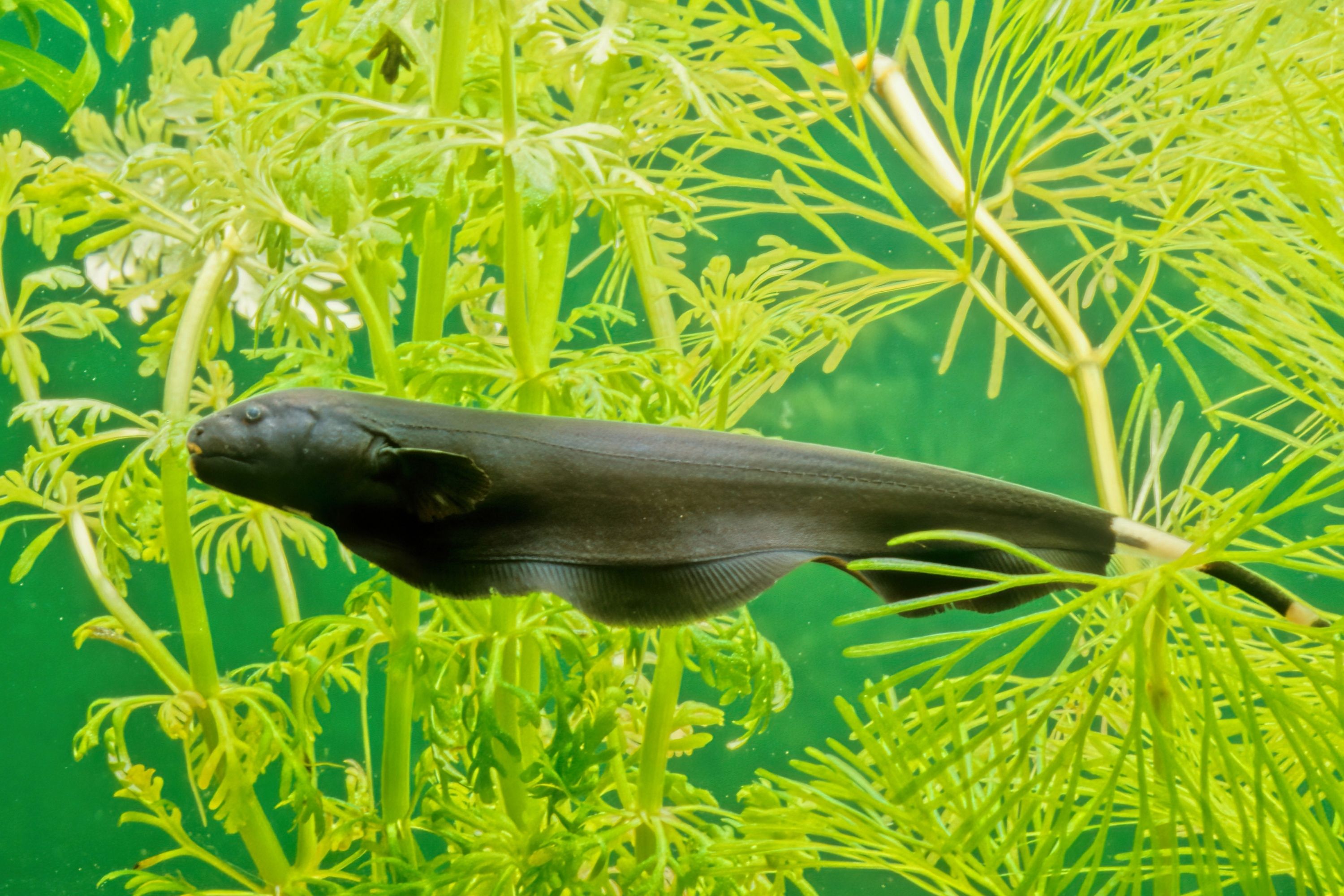Black ghost knifefish
(Apteronotus albifrons)

Description
The black ghost knifefish (Apteronotus albifrons) is a tropical fish belonging to the ghost knifefish family (Apteronotidae). They originate in freshwater habitats in South America where they range from Venezuela to the Paraguay–Paraná River, including the Amazon Basin. They are popular in aquaria. The fish is all black except for two white rings on its tail, and a white blaze on its nose, which can occasionally extend into a stripe down its back. It moves mainly by undulating a long fin on its underside. It will grow to a maximum length of 50 cm (20 in). Black ghost knifefish are nocturnal. They are a weakly electric fish which use an electric organ and receptors distributed over the length of their body in order to locate insect larvae. Black ghost knifefish with its underside pointing towards the camera The black ghost knifefish natively lives in fast moving, sandy bottom creeks in a tropical climate. South American natives believe that the ghosts of the departed take up residence in these fish, hence the name. The black ghost knifefish is a weakly electric fish as a result of the electromotor and electrosensory systems it possesses. While some fish can only receive electric signals, the black ghost knifefish can both produce and sense the electrical impulses. Electrogenesis occurs when a specialized electric organ found in the tail of the fish generates electrical signals, which are thus called electric organ discharges (EODs). Then, for these EODs to be sensed by the fish, electroreception occurs when groups of sensory cells embedded in the skin, known as electroreceptor organs, detect the electrical change. The EODs are used for two major purposes: electrolocation and communication. The kind of EOD produced can be used to distinguish between two types of weakly electric fish: the pulse-type and the wave-type. The black ghost knifefish are considered to be the latter type, because they can continuously generate EODs in small intervals. Wave-type EODs have a narrow power spectra, and can be heard as a tonal sound, where the discharge rate establishes the fundamental frequency. By emitting its own continuous sinusoidal train of EODs, the fish can determine the presence of nearby objects by sensing perturbations in timing and amplitude of electric fields, an ability known as active electrolocation.
Taxonomic tree:







